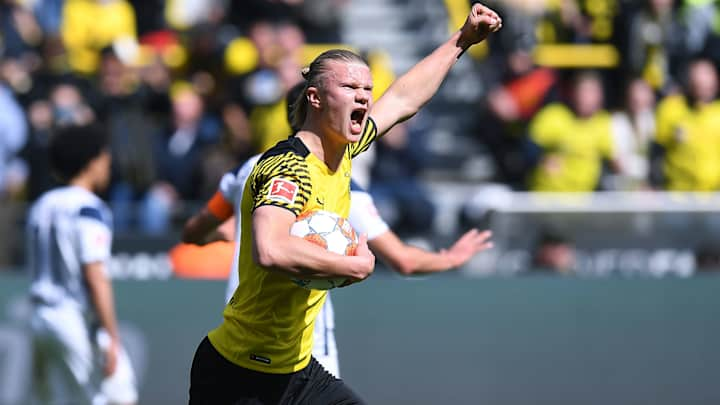Erling Haaland and Manchester City Make for a Frightening Combination

At first glance, the prospect sounds terrifying. Here is Manchester City, a glorious, creative team that occasionally struggles to take its chances, and here is Erling Haaland, a physically immense 21-year-old who over the last four seasons has averaged more than a goal per league start. Put them together and how could he not make City better? How could he not increase its goals output even further and perhaps, at last, bring the Champions League glory the club so desperately desires?
And that might happen. It has escaped nobody’s attention that City had had nine shots on target to Real Madrid’s none in the first 90 minutes at the Bernabéu in the second leg of the Champions League semifinals last week but led only 1–0. If only one other chance had gone in, surely that would have been too much even for this Madrid side to overcome. Similarly, it dominated the first leg far more than the 4–3 final scoreline suggested.
Haaland is an extraordinary footballer, a physical monster who fortuitously did not gain that sort of bulk until he was in his mid-teens, meaning he also has an acute awareness of how to move and create space. He can batter opponents out of the way, but his game is a lot more subtle than that. He managed the transition from Salzburg to Borussia Dortmund well, and he has thrived in the Champions League, suggesting a capacity to learn—although the Premier League represents a bigger change of style than shifting from Austria to Germany, and will impose more consistent physical demands. If there’s a knock on Haaland, it’s his propensity to take a knock: He has missed 31 games through injury in two seasons at Dortmund.
The Norwegian already scores a lot of goals from low cutbacks, which is how City likes to attack. His signature goal, bursting through challenges from deep, may be harder to enact with City, which plays so habitually high that he is unlikely to have such space to charge into, but if he can add a more direct counterattacking element, particularly against higher-level opponents, that is all to the good. And, obviously, he is big, so although Haaland is not a prolific scorer of headed goals, he will at least draw the attention of one of the opposition’s larger markers, potentially creating space for others. City already has the best set-piece goal-difference of any Premier League team.
More generally, Haaland is a player with rough edges. He is a diversion from the general pattern of diminutive technicians who make up the bulk of the City squad. There has long been a sense that City can become predictable, that it needs something to break up the neat patterns as Lionel Messi used to break things up for Barcelona. Haaland is the sort of player who can win a game from nowhere, who might mean that City does not have to dominate or be in control.
But of course any player who is a disruptive force is a risk. Haaland has made clear his admiration for Zlatan Ibrahimović, who joined Pep Guardiola’s Barcelona in 2009 with similar expectations that he could add physicality and unpredictability to an already brilliant squad. Ibrahimović did not fit and fell out with Guardiola, mocking other members of the squad as “obedient little schoolboys.” That was part of the point, but Ibrahimović was unwilling to sacrifice himself to get the best out of Messi.
Haaland is not the same character. He can be prickly and seems to delight in sullen media interviews, but he does not have Ibrahimović’s ego or the same bristling sense of being an outsider. Nor is there a Messi figure to take top billing. There is no reason why Haaland won’t become the face of City for a generation.
He has cost only €60 million as a fee, with personal terms yet to be confirmed. That is remarkably cheap—the function of a buyout clause in his Dortmund contract. As such, he fits the price profile of most of the squad. But given how vast his wages are likely to be (reports suggest he’ll be on weekly wages of £375,000), Haaland’s acquisition continues the process begun with the £100 million signing of Jack Grealish last summer. Having spent most of the past decade making cautious, sensible signings (and 22-year-old Argentine striker Julián Álvarez is already due to join this summer from River Plate), there is a willingness, now that the books show the world’s largest revenues for a football club, to sign more expensive, more glamorous talent.
From a marketing point of view, perhaps that is a logical next step, pushing the brand through celebrity to shore up those revenue streams so City is not reliant on deals with companies based in the UAE. But there is a danger that disrupts Guardiola’s footballing project, which demands subjugation to the system. There is also, though, the distinct possibility that it enhances it. And for a club on the brink of a fourth Premier League title in five seasons and one so close to achieving European success, that is a frightening thought.
More Soccer Coverage From Jonathan Wilson:

An accomplished author of multiple books, Jonathan Wilson is one of the world’s preeminent minds on soccer tactics and history.